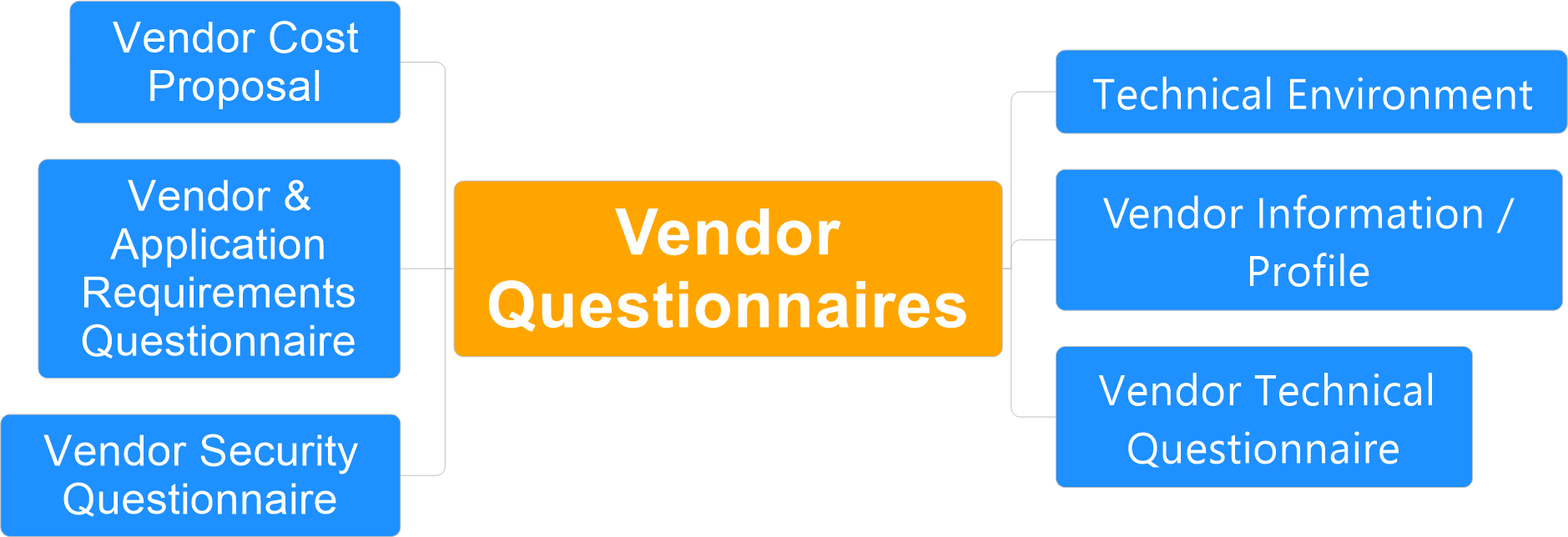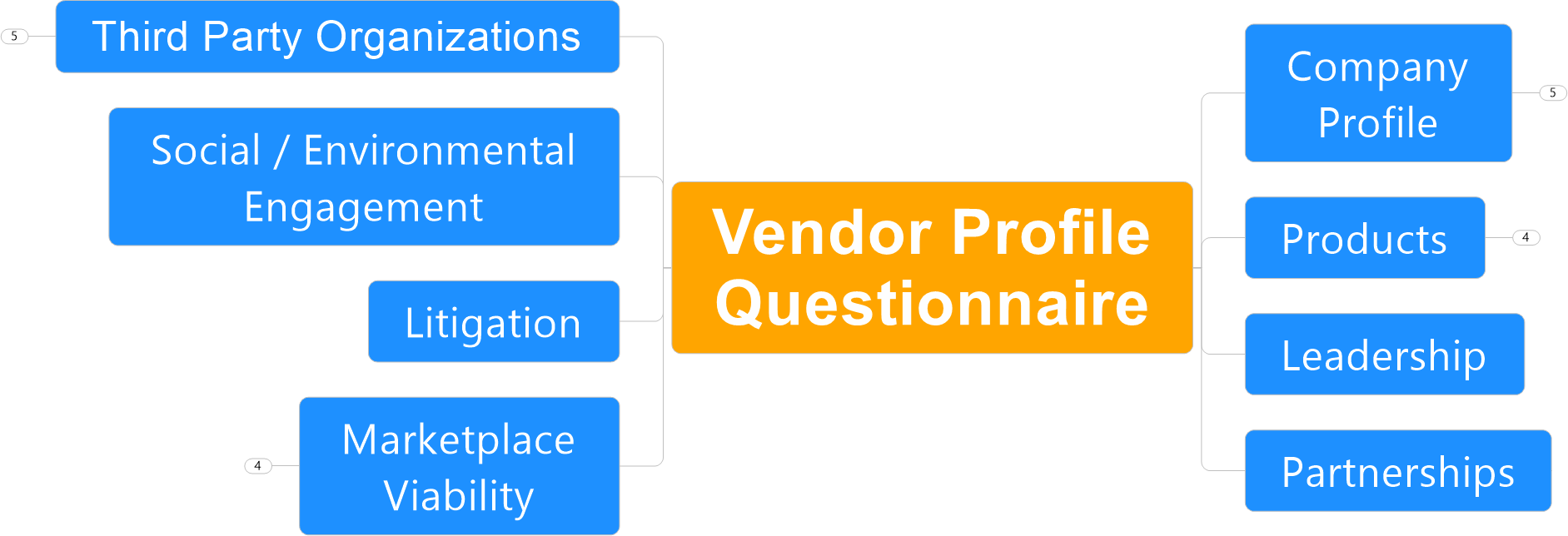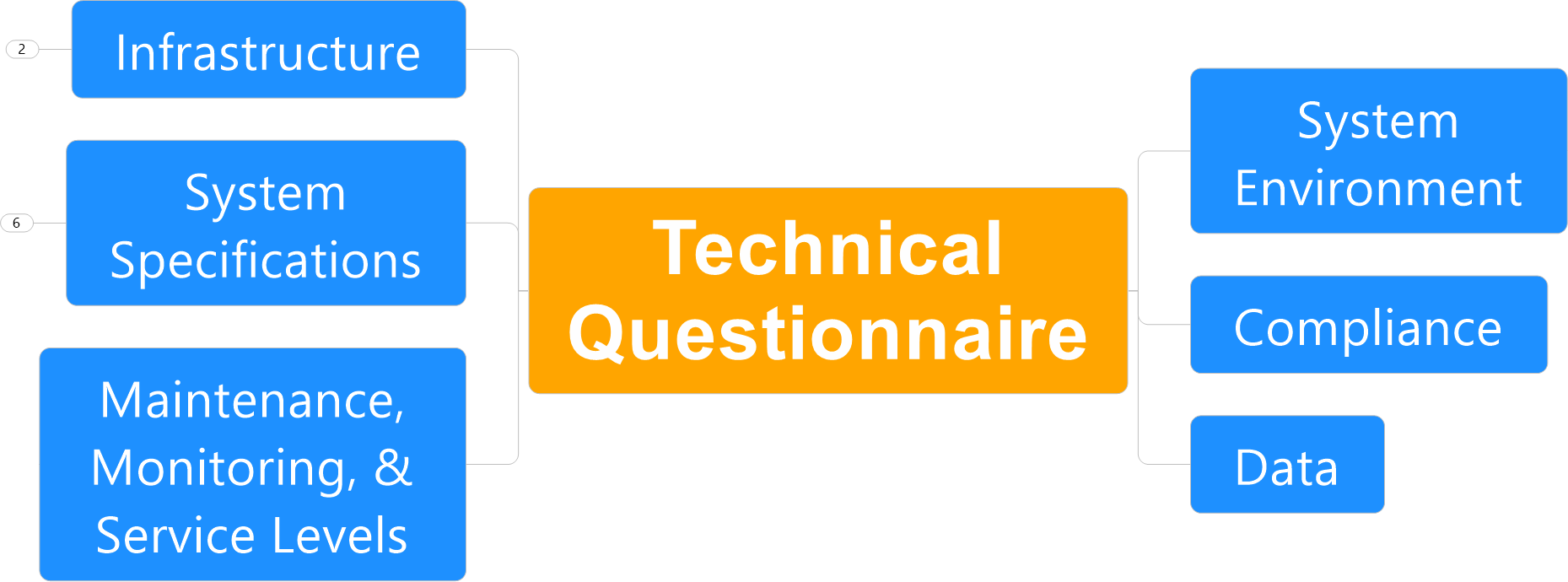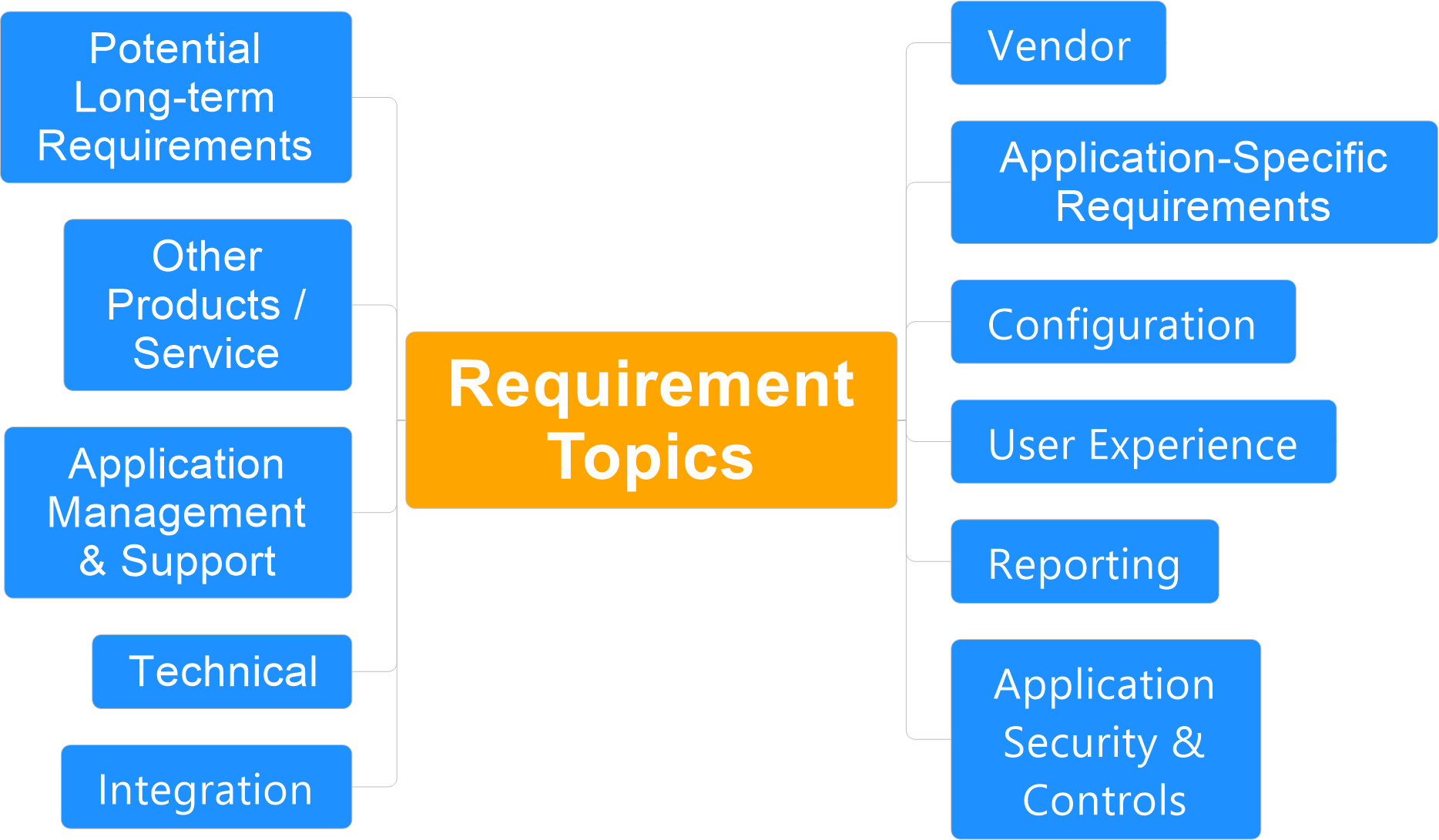Begin with your organization's standard procurement template for soliciting technology-related vendor solutions.
RFP-related questions that are scored are one of two types.
While most of the RFP document details procurement terms and conditions, the questionnaires provide worksheets for vendors to respond to your needs.
The questionnaires are attached to the RFP as appendices.

Partner with your IT and security organizations to prepare and finalize these questionnaires.
Also, review the questionnaires with your procurement and legal teams to ensure that the information isn't sensitive or proprietary.
A brief, one or two-page description of your organization's technical environment, such as:

Assess the vendor's stability and outlook for the future.
Gathered information includes:

Gathers technology-related information on a vendor's proposed solution, including:

Gathers in-depth hosted and on-site security practices used by a vendor, including:

Vendor question topics include:
Application requirement topics include:

Proposed vendor cost components include:
The cost proposal worksheet should specify the deployment approach. Each deployment approach option should have its worksheet.
Vendors should note the added contingency costs and their cost commitment.

To organize the Application Requirements Questionnaire and Vendor Cost Proposal, use a worksheet format, like the layouts below.
Partner with your procurement and legal team to draft and finalize RFP content.
Provide your organization's purpose and objective for issuing the RFP.

Provide an overview of your:

Provide a timeline for the RFP process and submission guidelines, including the number of copies, format, and media, e.g., paper and electronic.

Describe your evaluation guidelines and process.

Request the vendor to describe additional services provided in their response, such as project and support services that address your organization's requirements.

Describe your organization's standard payment terms and methods.

Request the vendor to describe what value their solution and services deliver to your organization.

Your organization's Procurement and Legal department provides standard procurement terms and conditions.
Those terms and conditions should be in your organization's standard RFP template—request vendors to note their exceptions.

Request the vendor provide three to five customer references.

The questionnaires are the primary vendor response documents to the RFP.

Addendums are procurement-related attachments that allow the vendor to:

Your Procurement team may be required to publish notices regarding the RFP in local or community newspapers.
Also, many Procurement teams use online procurement exchanges, such as DemandStar for public sector organizations, to electronically publish, track, and receive RFP-related communications from vendors.
Schedule a vendor conference within a week or two of publishing your RFP.